LaTeX templates and examples — Two-column
Recent
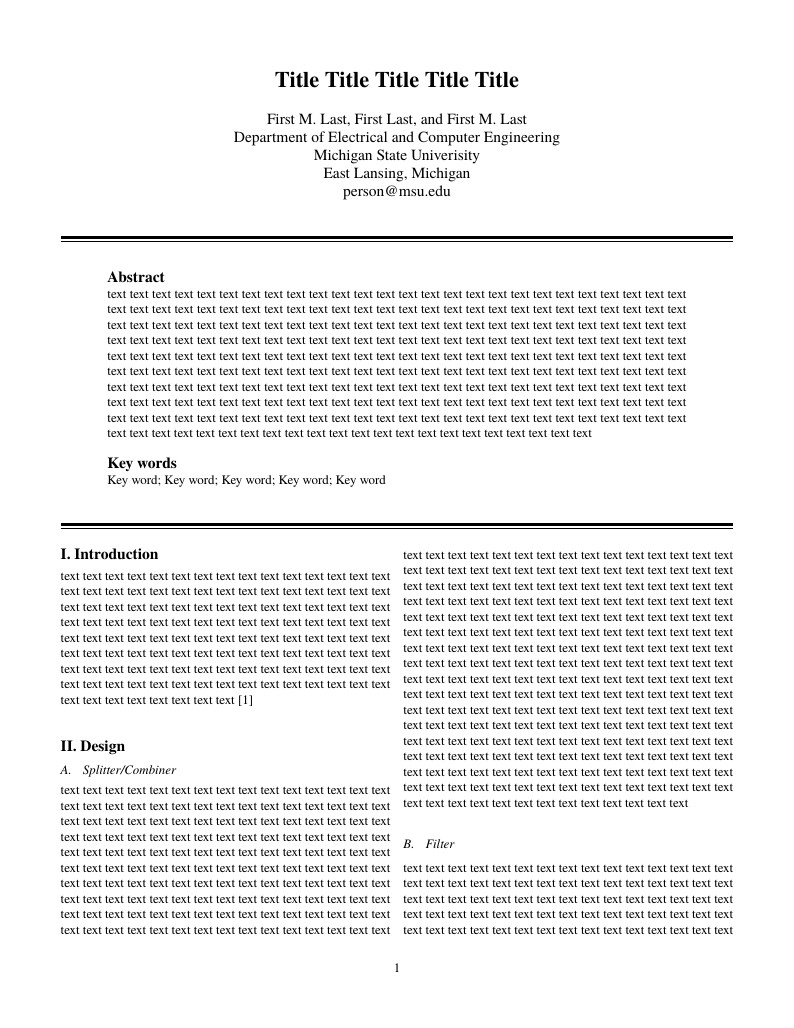
A LaTeX template done in the style of the provided MS Word document for the International Microelectronics Assembly and Packaging Society (IMAPS) conference for 2017.
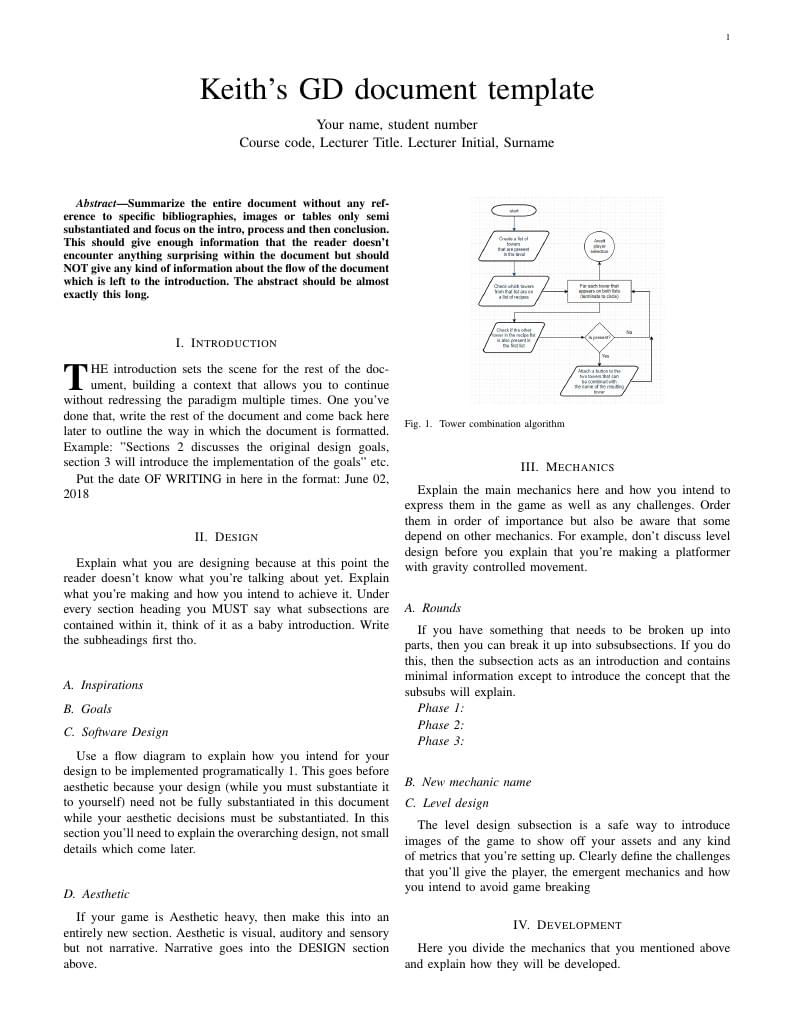
A useful document for game designers to layout your ideas in a way that makes sense to outsiders. It's not 100% necessary to have all of these sections always do what is best for your projects which may need special sections such as 'narrative' or if your project is far more script heavy then look into LaTeX plugins for UML and class diagrams to make your doc extra pretty.
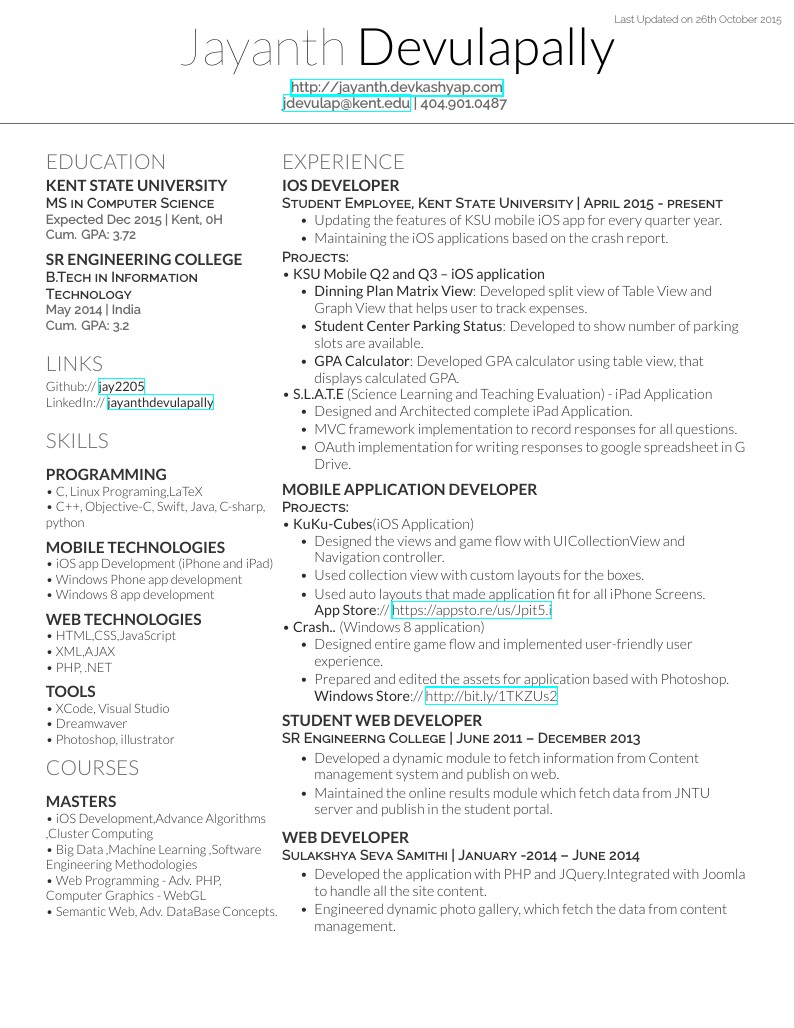
Created using the Deedy CV/Resume XeLaTeX Template Version 1.0 (5/5/2014)
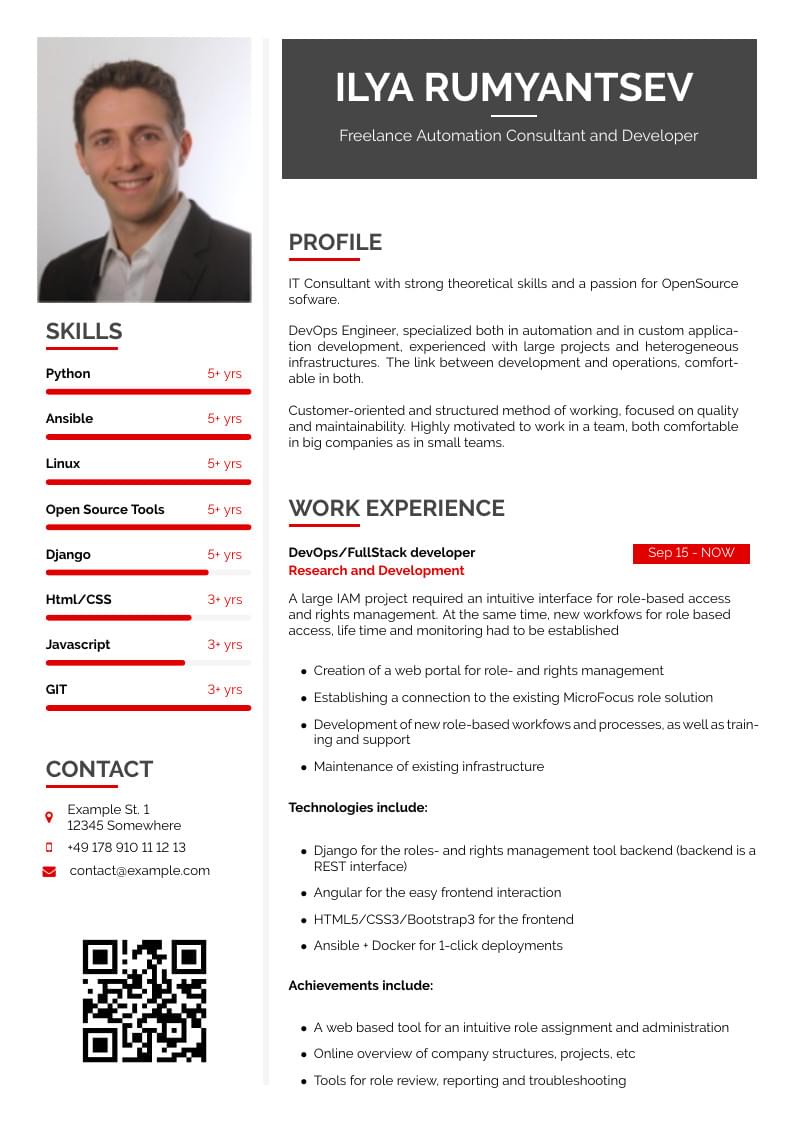
A multi-page CV template with left sidebar. The page breaks are realized using the paracol environment. Thanks to Ilya Rumyantsev for contributing idea and credentials. Taken from https://github.com/jankapunkt/latexcv.
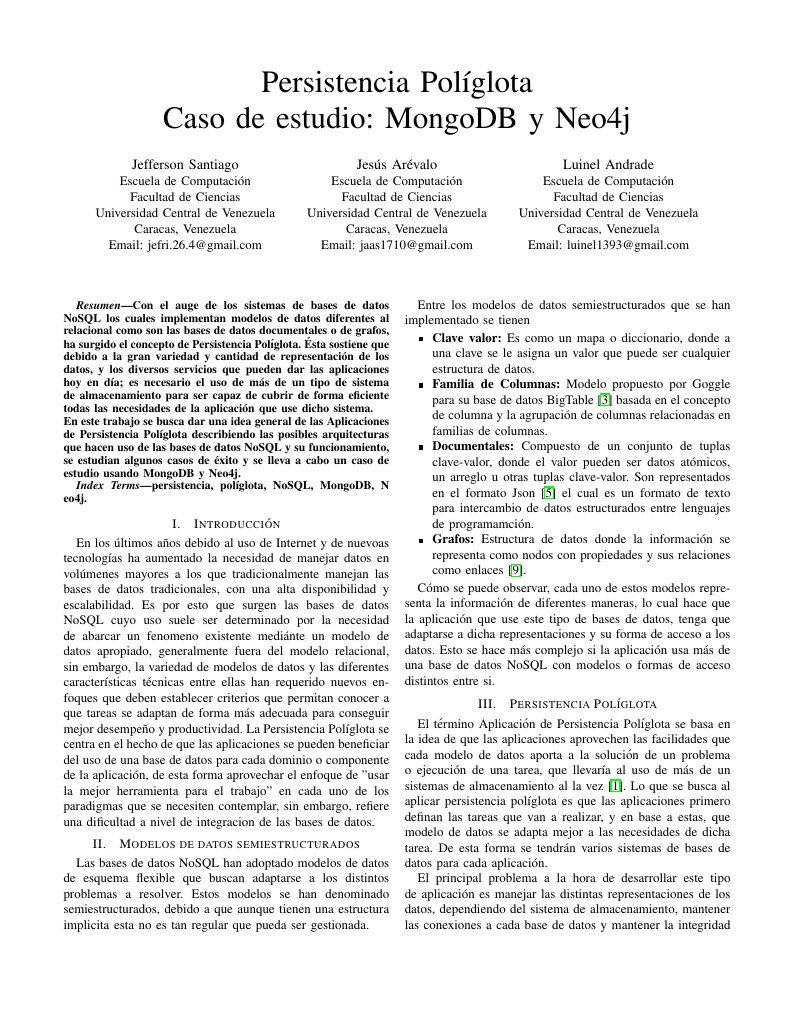
Con el auge de los sistemas de bases de datos NoSQL los cuales implementan modelos de datos diferentes al relacional como son las bases de datos documentales o de grafos, ha surgido el concepto de Persistencia Políglota. Ésta sostiene que debido a la gran variedad y cantidad de representación de los datos, y los diversos servicios que pueden dar las aplicaciones hoy en día; es necesario el uso de más de un tipo de sistema de almacenamiento para ser capaz de cubrir de forma eficiente todas las necesidades de la aplicación que use dicho sistema. En este trabajo se busca dar una idea general de las Aplicaciones de Persistencia Políglota describiendo las posibles arquitecturas que hacen uso de las bases de datos NoSQL y su funcionamiento, se estudian algunos casos de éxito y se lleva a cabo un caso de estudio usando MongoDB y Neo4j.
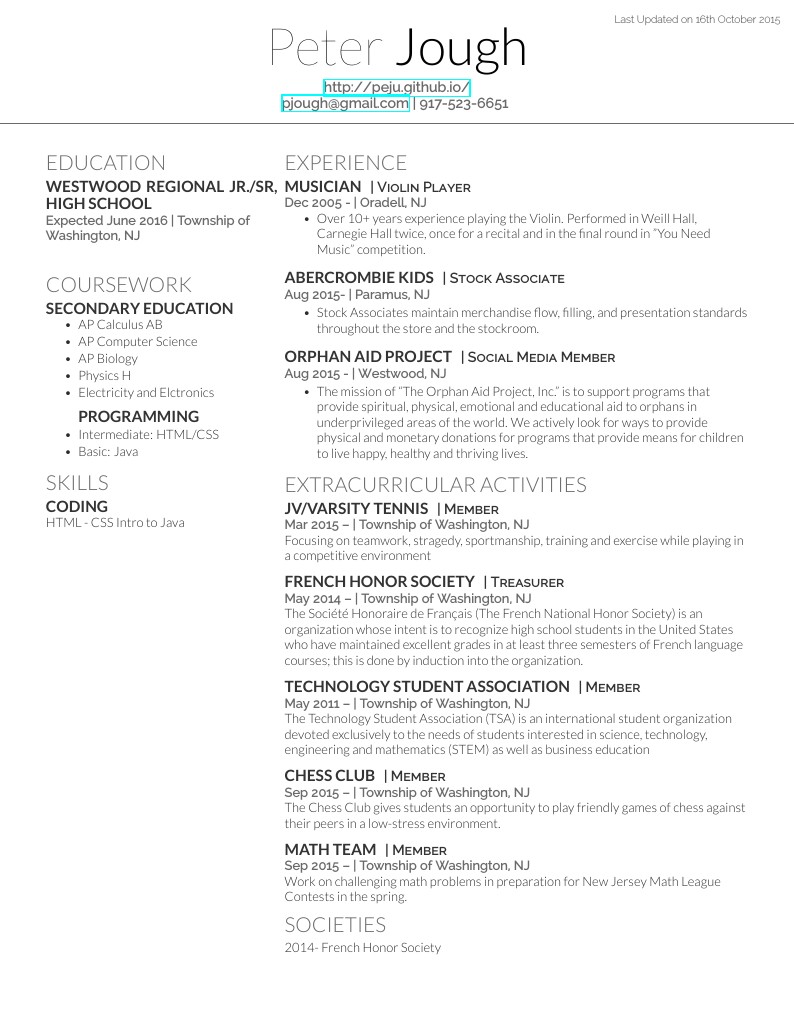
Created using the Deedy CV/Resume XeLaTeX Template Version 1.0 (5/5/2014) This template has been downloaded from: http://www.LaTeXTemplates.com Original author: Debarghya Das (http://www.debarghyadas.com) With extensive modifications by: Vel (vel@latextemplates.com)
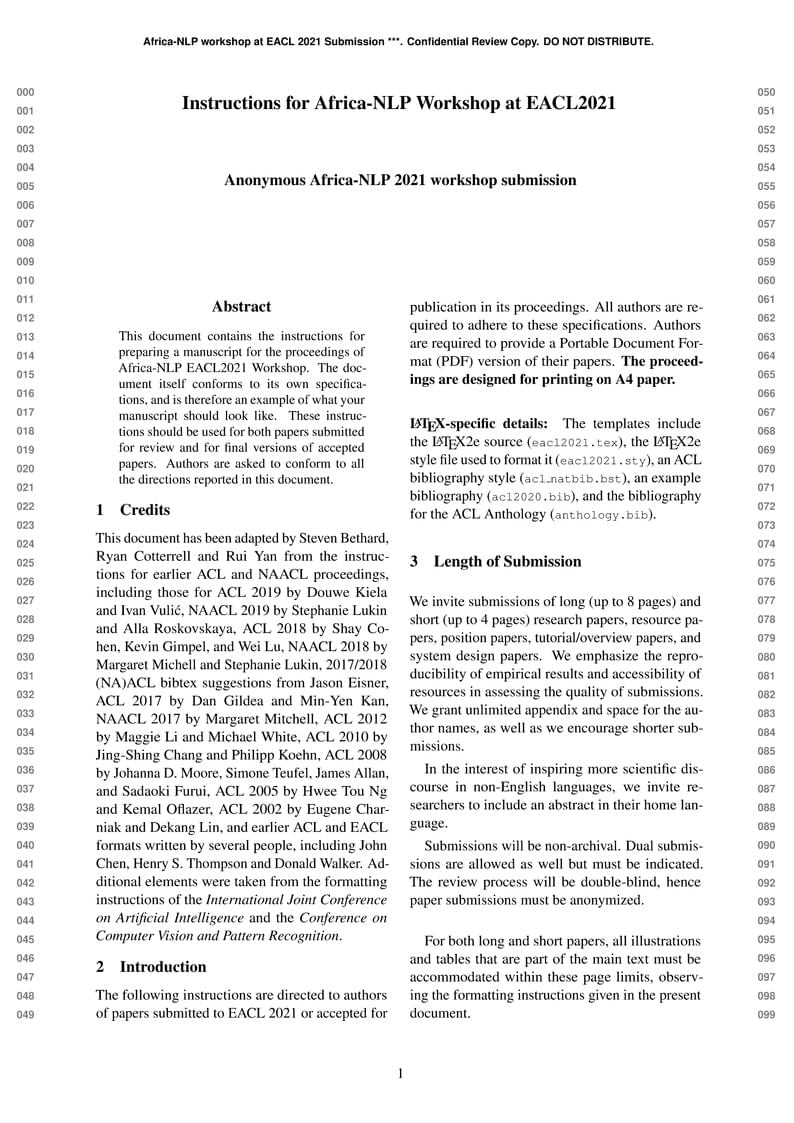
LaTeX template for AfricaNLP Workshop Submissions. EACL 2021, Virtual Event Note from Overleaf: SyncTeX will not work correctly with this template (as well as other templates based on similar underlying code, eg CVPR, EMNLP, etc) when the line numbers are active. To make SyncTeX function while authoring your manuscript, either on Overleaf or in your own LaTeX installation, the line numbers have to be turned off by uncommenting \aclfinalcopy.
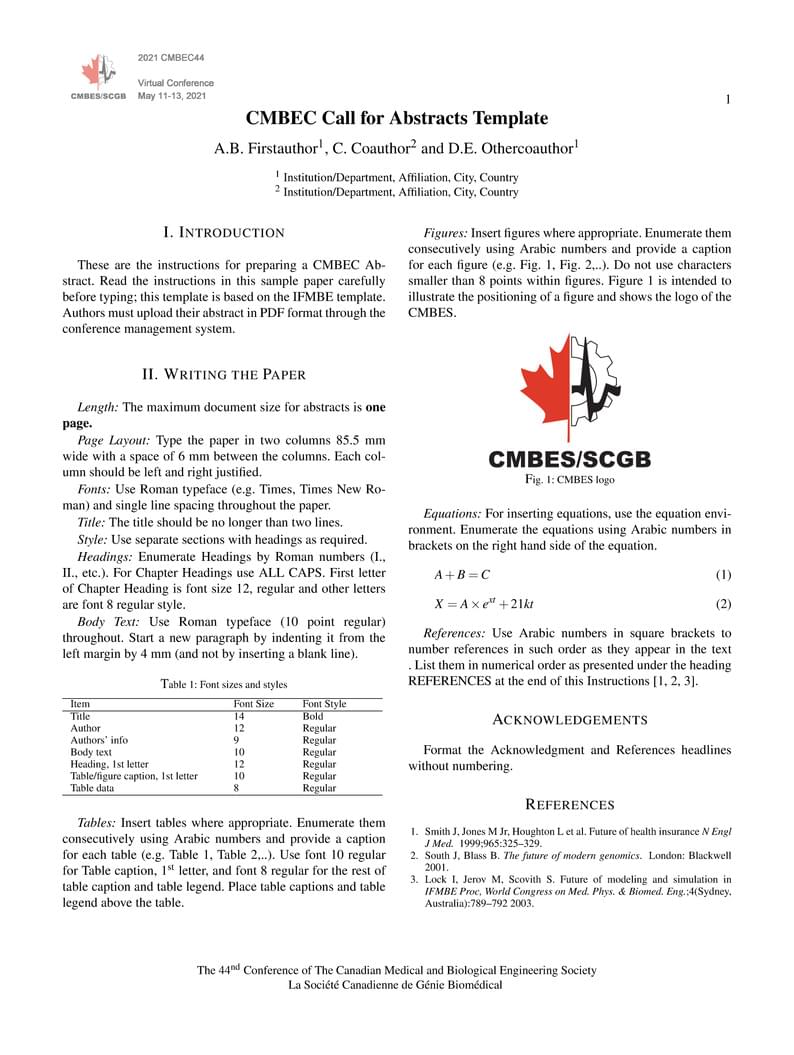
These are the instructions for preparing a CMBEC Abstract. Read the instructions in this sample paper carefully before typing; this template is based on the IFMBE template. Authors must upload their abstract in PDF format through the conference management system.
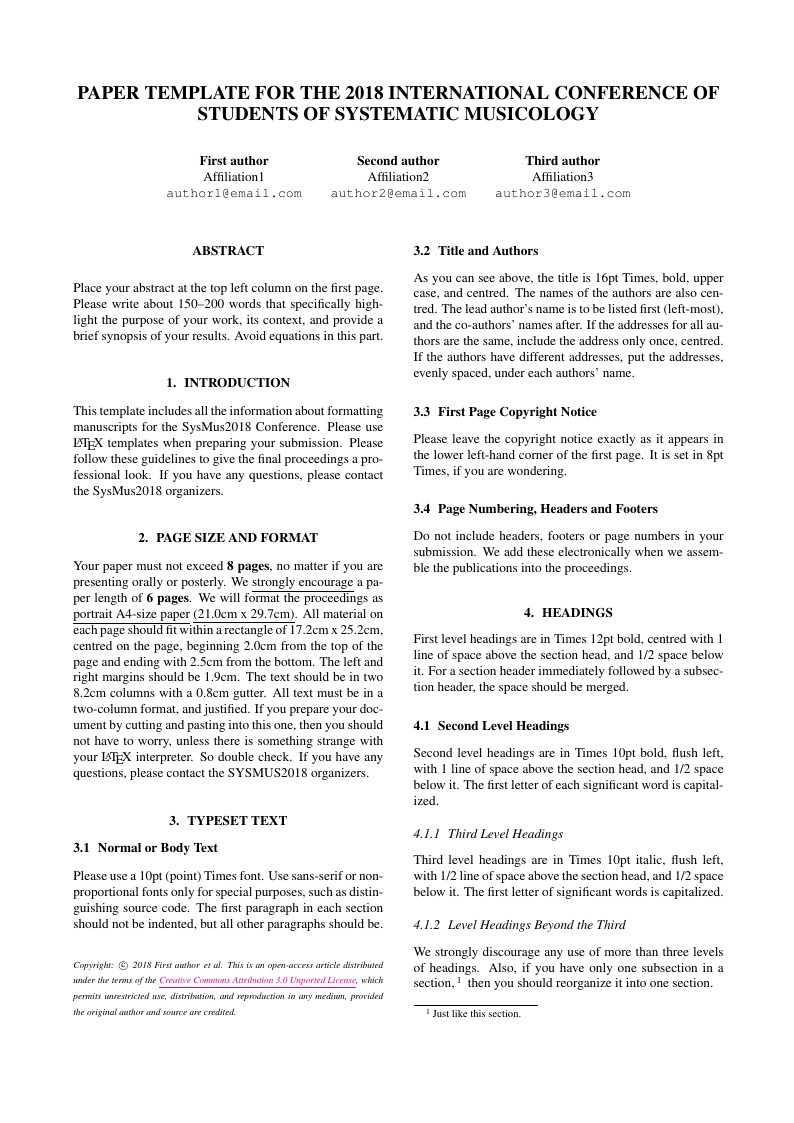
This LaTeX template includes all the information about formatting manuscripts for the 11th International Conference of Students of Systematic Musicology (SysMus2018).
\begin
Discover why over 20 million people worldwide trust Overleaf with their work.